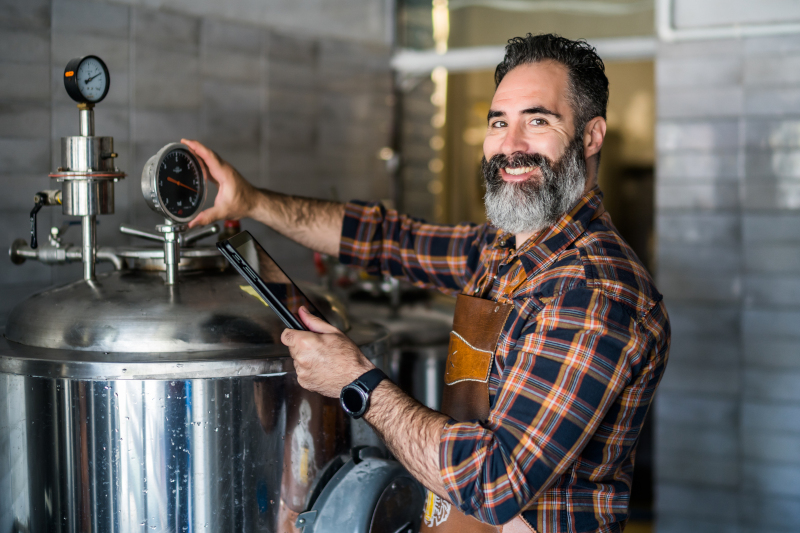If you are well versed in the realm of spirits, especially aged ones, you might have come across a term that sounds questionable and piques your curiosity: rancio. It’s a term traditionally associated with wines and spirits like Cognac and Armagnac. But what does this word mean when it’s whispered reverently by whiskey enthusiasts, and how does it factor into your whiskey experience? Well, we are here to bring some clarity to your confusion and of course…its impact on whiskey.
Understanding the Basics: What is Rancio?
At its core, rancio is a flavor profile that develops in well-aged spirits and is reminiscent of rich, earthy, and sometimes even funky elements.
Long aging methods and the complex interaction of the spirit, wood, air, and time produce Rancio’s unique character. The name comes from the Catalan word “ranci,” which describes the intensely aged qualities of fine wines. Whisky connoisseurs have recently come to recognize and enjoy the rancio flavor note, which was previously primarily associated with wine and brandies like Cognac and Armagnac.
When spirits are aged, the liquid is in constant contact with the oak barrels, resulting in the transfer of flavors and the loss of other constituents. The oxidation process that occurs as the spirit comes into contact with the wood is crucial to the emergence of rancio qualities. Like the patina that develops on copper or bronze, this too will change over time. It’s not just about how old the spirit gets, but also about the circumstances under which it develops.
The aroma of rancio is reminiscent of browsing through dusty tomes in a historic library. There’s a mustiness and depth to it that makes me think of old books and forgotten tales. In the same vein, rancio adds a layered complexity to spirits that can only come from extensive aging in a carefully curated barrel environment.
The spectrum is wide, spanning from the sharpness of citrus to the savory depth of cured meats, with dried fruit, leather, and forest floor as possible base notes. It is precisely these multifaceted qualities that can set a personality apart and make it unforgettable.
That’s the essence of rancio – a blend of old, mature, and deep notes that speak to time, patience, and transformation.
The Birth of Rancio
The term originated from the Spanish word ‘rancio’, meaning rancid. While rancidity in food is often a sign of spoilage, in the spirits world, rancio denotes a desirable characteristic that takes years, even decades, to develop. It’s this elusive flavor that elevates a drink from good to exceptional, from pleasant to memorable.
Now, you might wonder, how does something associated with decay find its way into our treasured spirits? The aging process of whiskey, like many spirits, is an intricate dance between the liquid and its wooden barrel. Over time, evaporation allows oxygen to play a role, and the spirit undergoes chemical changes. These interactions can lead to flavors and aromas we associate with rancio.
Rancio in Whiskey
While rancio has its roots in Cognac and Armagnac, the term has found its way to whiskey, especially when discussing well-aged bottles. You see, the longer a whiskey spends time in its wooden confines, the more intense and varied its flavors become. However, not every old whiskey will develop rancio. It’s a bit of a wild card, influenced by factors like the distillation process, type of grain, quality of the barrel, and even the climate of the distillery.
For instance, let’s think about a well-aged Scottish single malt, especially from the coastal regions. When you take that first sip, you’re met with a robust palette of flavors – hints of seaweed, iodine, dried fruit, and old leather. That’s rancio at play. Meanwhile, an old Bourbon might surprise you with rich notes of dried tobacco, candied fruits, and even a touch of barnyard – again, echoes of rancio.
Spotting Rancio in Your Drink
To truly appreciate rancio, you need to approach your whiskey with an open mind and an attentive nose. Start by pouring your drink and letting it breathe. Swirl it gently in your glass and take a moment to inhale deeply. If you detect deep, mature aromas that are hard to pin down but remind you of earth, fruit, leather, or even umami, you might be on the trail of rancio.
When tasting, let the liquid sit on your palate. Rancio isn’t just a flavor; it’s an experience, a sensation that deepens and evolves as the whiskey moves through your mouth. It’s the kind of taste that tells stories of years gone by.
What are the experts’ opinions?

- Old Tradition vs. New Methods: Some purists argue that rancio’s essence can only be genuinely appreciated in traditional spirits like Cognac and Armagnac. They believe that whiskey’s adoption of the term is merely borrowing the prestige associated with aged spirits. On the flip side, modern distillers see the recognition of rancio in whiskey as an evolution, believing it’s an exemplification of the spirit’s maturity and depth.
- Climate’s Role: A subset of experts feels that rancio is more pronounced in spirits aged in regions with extreme climate fluctuations. They argue that places with dramatic seasonal changes—hot summers and cold winters—contribute more significantly to the development of rancio. Meanwhile, others believe it’s less about the climate extremities and more about the consistent, subtle interactions over extended periods.
- Barrel Influence: There’s a school of thought that emphasizes the type of wood and prior use of the barrel. Some think that barrels that previously housed sherry or port intensify the rancio character due to the residual sweetness. Contrarily, others believe that first-fill oak barrels, devoid of any prior spirit influence, offer a purer platform for rancio development.
- Grain Vs. Grape Debate: Given rancio’s origins in grape-based spirits, a debate arises on whether the base material affects its development. Some experts contend that the grape base of Cognac or Armagnac is more conducive to rancio, while others argue that grain-based spirits like whiskey can develop an equally intriguing rancio profile.
- Age Isn’t Just a Number: While it’s often assumed older spirits automatically develop rancio, some critics opine that age is not the only factor. They point to young spirits that display surprising depth and complexity, suggesting that other factors, like distillation techniques or fermentation processes, might play pivotal roles. Conversely, traditionalists uphold the belief that true rancio can only emerge with significant aging.
- The desirability of Rancio: Rancio might sound exotic, but not every whiskey enthusiast appreciates its presence. Some describe it as an acquired taste, similar to the love or disdain for blue cheese. While many celebrate its depth and complexity, others find its earthy and funky tones off-putting, preferring crisper, cleaner profiles in their whiskey.
Enhancing Your Rancio Experience
To truly make the most of rancio in your whiskey, consider the setting and accompaniments. Pairing your drink with the right food can amplify these flavors. Think aged cheeses, dried fruits, or rich nuts. Additionally, the glass you use matters. A tulip-shaped glass, for instance, concentrates the aromas, making it easier for you to pick up on those elusive rancio notes.

